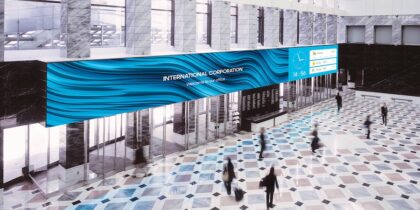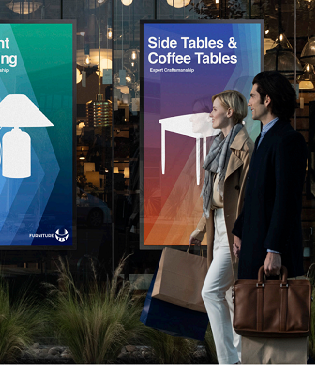Sometimes, the distance between good and great is hardly any at all, as with the difference between liquid crystal displays (LCDs) and light-emitting diode (LED) displays. Both flex impressive visual capabilities and are suitable for retail window signage, campus wayfinding or large video walls. But which is the best choice for a given situation? Choosing the display that’s right for you begins with learning the difference between the two and the pros and cons of each. Here’s what you need to know.
Defining LCD and LED displays
Essentially, liquid crystal displays represent the broad category, and light-emitting diode displays are a subset. In other words: All LED monitors are LCDs, but not all LCD monitors are LED. The difference comes in how the hundreds of thousands — even millions — of individual liquid crystal pixels are lit, filling the screen with a mosaic of color that forms a coherent picture.
How to plan and deploy direct view LED signage
Everything you need to know about choosing your LED displays for optimal viewing indoors and out. Download Now
LCDs are backlit by cold cathode fluorescent lamps (CCFLs), which are evenly positioned behind the pixels so that, at least in theory, every part of the screen maintains a consistent brightness. An LED screen also illuminates liquid crystals to generate color, but it uses tiny individual light-emitting diodes that generate their own light when energized by electricity. The effect is a sharper image with higher color accuracy. This also allows LEDs to employ “local dimming,” where specific areas of the screen can brighten or darken dynamically, improving the contrast.
LED vs. LCD: Which is better?
Is LED just plain better than LCD? The answer is not entirely clear-cut and depends on the situation and budget. Indeed, the significant advantage of the latter over the former is the price point. As LCDs approach veteran status, they tend to cost less than LEDs. However, with the increasing ubiquity of diode displays, that gap is closing. And even though LCD is moving with the times as much as it can — Samsung 105-inch QPDX-5K Series is a great case in point — in most other respects, LED displays have the advantage.
A good example is the greater nit value in diode displays, which translates to a brighter screen. The average nits value for LCDs is between 500 and 700 nits, while LEDs typically range from 1,200 to 2,400 nits. With greater brightness comes greater contrast, and superior all-day visibility on outdoor displays.
The LED advantage
Higher brightness doesn’t necessarily mean a shorter lifespan despite the energy output. In fact, LED displays have an average lifespan of 10 years — double the five-year lifespan of your average LCD. When you factor in this longevity, LED can become a smarter and more economical investment in the long run.
The more compact nature of LEDs tends to make a sleeker design, too. While the bezel — the frame around the screen — has drastically reduced over time, a bezel is still a bezel. Because of the CCFL backlighting, liquid crystal displays also tend to be thicker, which may require a larger space. LEDs can manage with no bezel at all and a slimmer body. They also do this with superior energy efficiency.
Next evolution: microLED
LED is far from the first technology to realize that miniaturization is the way forward. Even as screens and displays get bigger, the next significant technological advancement in digital display comes from smaller parts: microLEDs.
Up to 40 times smaller than the standard ones, microLEDs allow backlighting to be even more precisely targeted, thanks to the huge number of diodes. This, in turn, delivers a more accurate picture, with greater contrast and highly focused areas of brightness. Samsung The Wall MMF is a spectacular example of what microLED is capable of — especially when combined with other next-generation features like HDR10/10+ picture refinement, a powerful NQM AI Processor and certified eye comfort technology.
Whether you need your digital signage to entertain, communicate or simply impress, understanding the differences between LCD and LED will allow you to make a better-informed decision.
With best-in-class picture quality and exceptional durability, Samsung LED displays can help your business deliver content that engages, informs and entertains. Create a jaw-dropping brand moment and experience revolutionary business visuals with The Wall MMF LED Display.









